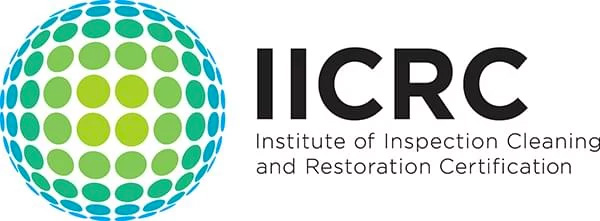Restoration vs. Renovation: What’s the Difference?
- What Is Restoration?
- Examples of Restoration Work
- What Is Renovation?
- Examples of Renovation Projects
- Why It Matters for Mold Testing and Inspections
- Restoration for Mold Damage
- Renovation for Mold Prevention and Long-Term Improvement
- How Mold Testing and Inspections Inform the Decision
- The Role of Expert Mold Services
- Why Choose Markham Services?
When your property requires attention—whether to address damage or improve its overall appeal—you’ll likely encounter the terms “restoration” and “renovation.” While they might seem similar, these processes serve distinct purposes and require different approaches.
Understanding the difference between them is essential for making informed decisions about your property.
This article explores the unique benefits of both restoration and renovation. By examining their roles in property improvement, you’ll gain valuable insights to help determine the best course of action, especially when dealing with issues like mold damage.
What Is Restoration?
Restoration focuses on bringing a property back to its original condition, often after it has suffered damage from natural disasters like fires, floods, or storms, or from other issues such as mold infestations or structural wear over time.
The goal is to repair and reinstate the property’s functionality while preserving as much of its original structure, materials, and design as possible.
Restoration services are particularly vital when a property holds historical, architectural, or sentimental value. By focusing on repairing damage rather than replacing or redesigning, restoration maintains the unique character and authenticity of the space, ensuring it remains true to its original form.
Examples of Restoration Work
If your property has sustained water damage or mold issues, restoration might include a combination of specialized services such as:

- Water extraction and mold removal: Eliminating excess water and thoroughly treating mold growth to prevent recurrence and ensure the space is safe for use.
- Repairing damaged walls or floors: Replacing or reinforcing structural elements weakened by moisture or mold infiltration.
- Fixing electrical and plumbing systems: Restoring critical infrastructure to ensure the property is functional and up to code.
What Is Renovation?
Renovation focuses on improving, upgrading, and modernizing a property to enhance its aesthetics, functionality, and overall value. Unlike restoration, which aims to return a property to its original condition, renovations often go beyond fixing existing damage.
They allow property owners to reimagine and redesign their spaces to meet contemporary standards or personal preferences.
Renovations are particularly beneficial for those looking to increase market appeal, attract high-value tenants, or modernize their property to make it more energy-efficient and comfortable. It is an opportunity to address outdated features and create a property that aligns with current trends and demands.
Examples of Renovation Projects
Renovations can range from minor updates to complete transformations. Common projects include:
- Updating kitchens and bathrooms: Replacing outdated fixtures, cabinetry, and countertops with modern, durable, and stylish options to create a fresh and inviting look.
- Installing energy-efficient systems: Upgrading HVAC systems, windows, insulation, and appliances to reduce energy consumption and improve long-term savings.
- Reconfiguring layouts: Removing walls to create open-concept spaces or adding functional areas like home offices or additional storage.
- Replacing outdated materials: Incorporating mold-resistant drywall, modern flooring, or sustainable building materials for durability and enhanced appeal.

Why It Matters for Mold Testing and Inspections
When addressing mold infestations, understanding whether your property requires restoration or renovation is a critical decision.
Mold can cause damage ranging from health concerns to minor cosmetic issues to severe structural problems, and the right approach depends on the extent of the damage and your long-term goals for the property.
Restoration for Mold Damage
Restoration focuses on addressing immediate mold damage and returning the property to its original state. This approach is ideal for situations where:
- The damage is localized: Mold has affected only a specific area, such as a wall or section of flooring.
- The property’s original features should be preserved: In historical or sentimental properties, restoration prioritizes maintaining the existing design and materials.
- Cost is a primary consideration: Restoration often requires fewer changes and less extensive work, making it a more budget-friendly option for addressing mold.
Key restoration steps after mold testing may include:
- Removing mold-infested materials like drywall or carpets.
- Cleaning and sanitizing affected areas to prevent further mold growth.
- Replacing only the damaged sections of walls, flooring, or other structural elements.
Renovation for Mold Prevention and Long-Term Improvement
Renovation, on the other hand, provides an opportunity to not only address mold damage but also make upgrades that enhance the property’s functionality and durability. This approach is suitable when:

- The mold damage is extensive: When mold has compromised structural components, replacing and upgrading materials may be necessary.
- You want to prevent future issues: Renovation can incorporate mold-resistant materials, improved ventilation, and moisture control systems.
- The property needs modernization: If the property’s design or materials are outdated, renovation allows for updates that increase its value and appeal.
Renovation projects related to mold issues might include:
- Installing mold-resistant drywall, flooring, or insulation.
- Upgrading HVAC systems to improve air circulation and humidity control.
- Waterproofing basements or other areas prone to moisture.
How Mold Testing and Inspections Inform the Decision
Professional mold testing and inspections are essential in determining whether restoration or renovation is the best path forward. These services provide:
- Accurate assessments: Identifying the type of mold, its source, and the extent of the damage.
- Actionable insights: Offering guidance on whether restoration is sufficient or if renovation would provide a more sustainable solution.
- Preventive recommendations: Suggesting upgrades that address the root causes of mold growth, such as leaks, poor ventilation, or drainage issues.
The Role of Expert Mold Services
A company specializing in mold testing and inspections plays a vital role in guiding property owners through the decision-making process. By assessing the specific conditions of your property, they can help you weigh the benefits of restoration versus renovation and ensure the chosen approach aligns with your goals.

Whether you’re looking to restore your property to its original state or renovate it for long-term protection and enhanced value, starting with a professional mold inspection ensures you make an informed decision. This proactive step protects your investment and promotes a healthier living or working environment.
Why Choose Markham Services?
Understanding the difference between restoration and renovation is essential when planning property improvements. Restoration focuses on repairing damage and returning the property to its original state, while renovation aims to modernize and enhance the space.
For those dealing with water damage or mold concerns, Markham Services is here to assist. Our mold inspection, testing, and post-remediation services ensure your property is safe, healthy, and ready for the next steps in the restoration process.
Contact Markham Services today to learn more about how we can help with your mold inspection and testing needs. Let us provide the expertise and support you need for a successful property recovery.


